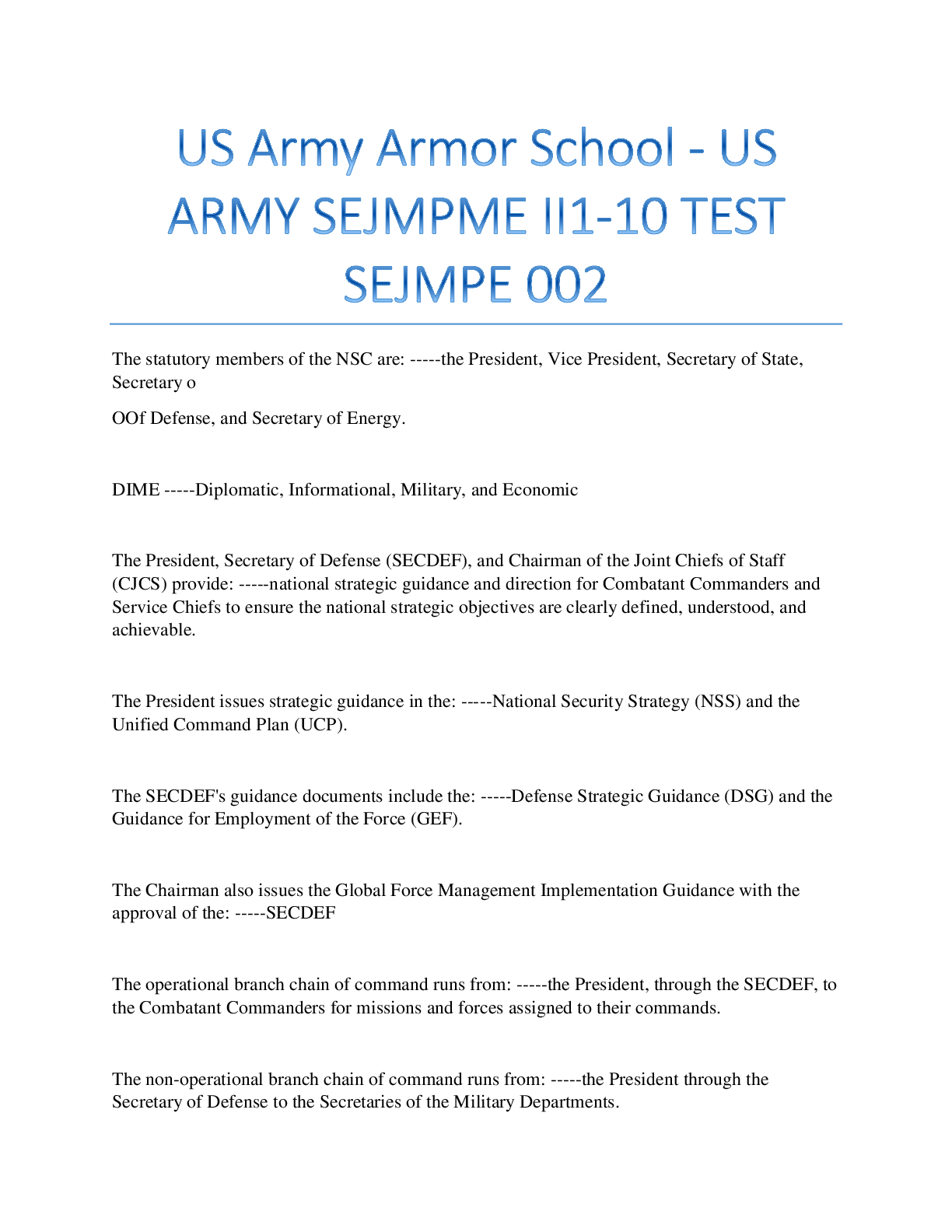Emergency Medicine > QUESTIONS & ANSWERS > EMT-TEST 3: Study Guide, Questions and answers, 100% Accurate, graded A+ (All)
EMT-TEST 3: Study Guide, Questions and answers, 100% Accurate, graded A+
Document Content and Description Below
EMT-TEST 3: Study Guide, Questions and answers, 100% Accurate, graded A+ A 30-year-old male presents with acute shortness of breath, widespread hives, and facial swelling. He denies any past medi... cal history and takes no medications. During your assessment, you hear wheezing over all lung fields. His blood pressure is 90/50 mm Hg and his heart rate is 110 beats/min. In addition to giving him 100% oxygen, the MOST important treatment for this patient is: - ✔✔-Epinephrine An alert patient presents with a regular pattern of inhalation and exhalation and breath sounds that are clear and equal on both sides of the chest. These findings are consistent with: - ✔✔-adequate air exchange When auscultating the lungs of a patient with respiratory distress, you hear adventitious sounds. This means that the patient has: - ✔✔-abnormal breath sounds Which of the following is MOST characteristic of adequate breathing? - ✔✔-24 breaths/min with bilaterally equal breath sounds and pink skin The two processes that occur during respiration are: - ✔✔-inspiration and expiration In addition to looking for severe bleeding, assessment of circulation in the conscious patient should involve: - ✔✔-checking the radial pulse and noting the color, temperature, and condition of his or her skin A conscious and alert 29-year-old female with a history of asthma complains of difficulty breathing that began after her morning jog. The temperature outside is 40°F (5°C). On exam, you hear bilateral expiratory wheezing. After providing 100% oxygen, you should: - ✔✔-determine if she has been prescribed a beta-agonist inhaler A young female is unconscious after intentionally ingesting a large amount of aspirin. You will MOST likely find her respirations: - ✔✔-deep and rapid When caring for a patient who takes numerous medications, it is best to: - ✔✔-take all of the patient's medications with you to the hospital and document them on your patient care report You and your EMT partner arrive at the residence of a 50-year-old man who complains of weakness. Your primary assessment reveals that he is critically ill and will require aggressive treatment. The closest hospital is 25 miles away. You should: - ✔✔-manage all threats to airway, breathing, and circulation and consider requesting an ALS unit Albuterol is a generic name for: - ✔✔-Proventil Upon initial contact with a patient who appears to be unconscious, you should: - ✔✔-attempt to elicit a verbal response by talking to the patient t is especially important to assess pulse, sensation, and movement in all extremities as well as pupillary reactions in patients with a suspected ___________ problem. - ✔✔-neurologic In what area of the lungs does respiration occur? - ✔✔-alveoli Dyspnea is MOST accurately defined as: - ✔✔-shortness of breath or difficulty breathing In contrast to the assessment of a trauma patient, assessment of a medical patient: - ✔✔-is focused on the nature of illness, the patient's chief complaint, and his or her symptoms Hyperventilation could be associated with all of the following, EXCEPT: - ✔✔-a narcotic overdose At the onset of an acute asthma attack, patients commonly experience difficulty breathing and: - ✔✔- expiratory wheezing The greatest danger in displaying a personal bias or "labeling" a patient who frequently calls EMS is: - ✔✔-overlooking a potentially serious medical condition A 22-year-old female patient is complaining of dyspnea and numbness and tingling in her hands and feet after an argument with her fiancé. Her respirations are 40 breaths/min. You should: - ✔✔-provide reassurance and give oxygen as needed When forming your general impression of a patient with a medical complaint, it is important to remember that: - ✔✔-the conditions of many medical patients may not appear serious at first Which of the following conditions would LEAST likely result in hypoxia? - ✔✔-severe anxiety When administering supplemental oxygen to a hypoxemic patient with a chronic lung disease, you should: - ✔✔-adjust the flow rate accordingly until you see symptom improvement, but be prepared to assist his or her ventilations Harsh, high-pitched inspiratory sounds are characteristic of: - ✔✔-stridor You are assisting an asthma patient with his prescribed metered-dose inhaler. After the patient takes a deep breath and depresses the inhaler, you should: - ✔✔-instruct him to hold his breath for as long as he comfortably can An acute myocardial infarction (AMI) occurs when: - ✔✔-myocardial tissue dies secondary to an absence of oxygen During your treatment of a woman in cardiac arrest, you apply the AED, analyze her cardiac rhythm, and receive a "no shock advised" message. This indicates that: - ✔✔-she is not in ventricular fibrillation Nitroglycerin is contraindicated in patients: - ✔✔-who have experienced a head injury Sudden death following AMI is MOST often caused by - ✔✔-ventricular fibrillation Which of the following medications is commonly given to patients with chest pain to prevent blood clots from forming or getting bigger? - ✔✔-aspirin Deoxygenated blood from the body returns to the: - ✔✔-right at [Show More]
Last updated: 1 year ago
Preview 1 out of 15 pages

Reviews( 0 )
Document information
Connected school, study & course
About the document
Uploaded On
Mar 15, 2023
Number of pages
15
Written in
Additional information
This document has been written for:
Uploaded
Mar 15, 2023
Downloads
0
Views
67






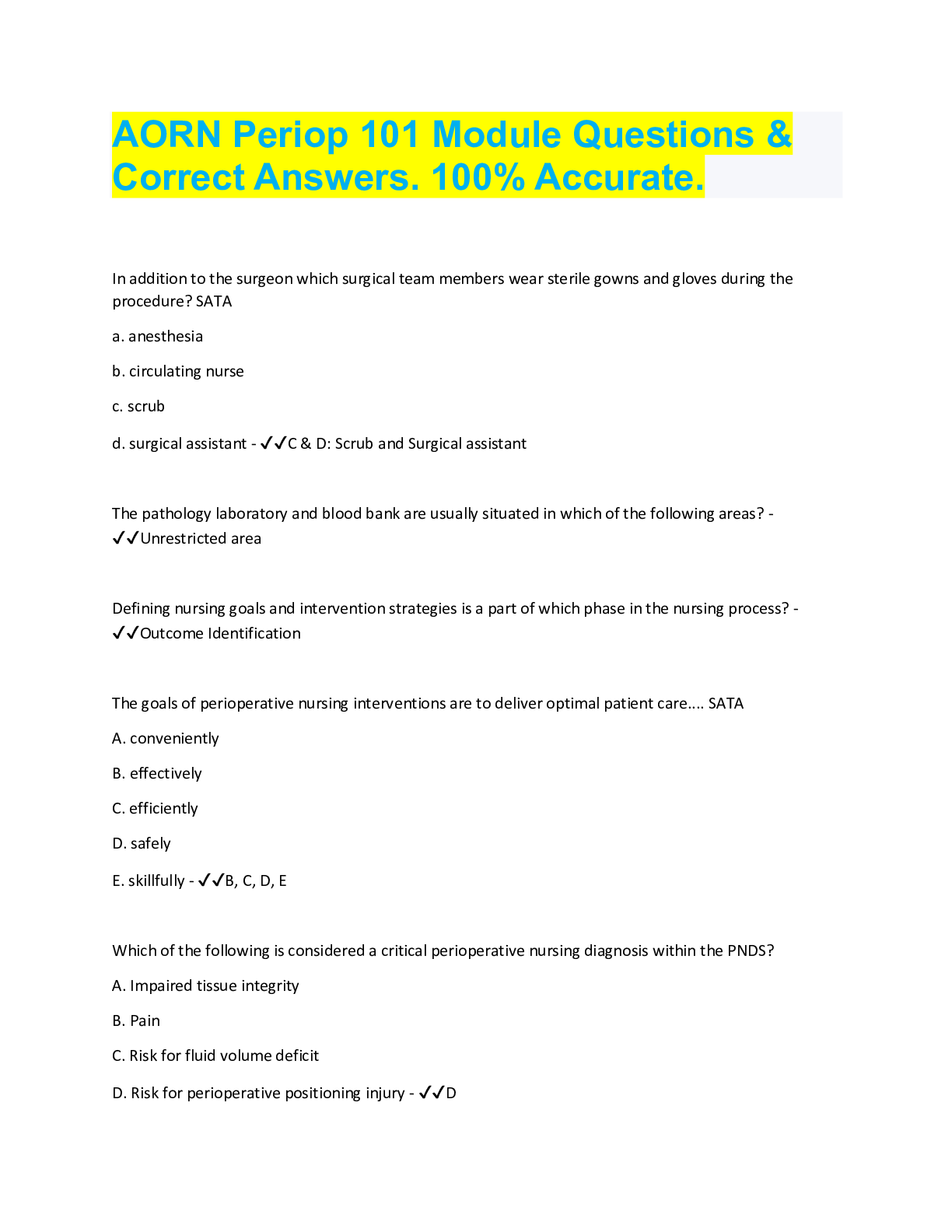





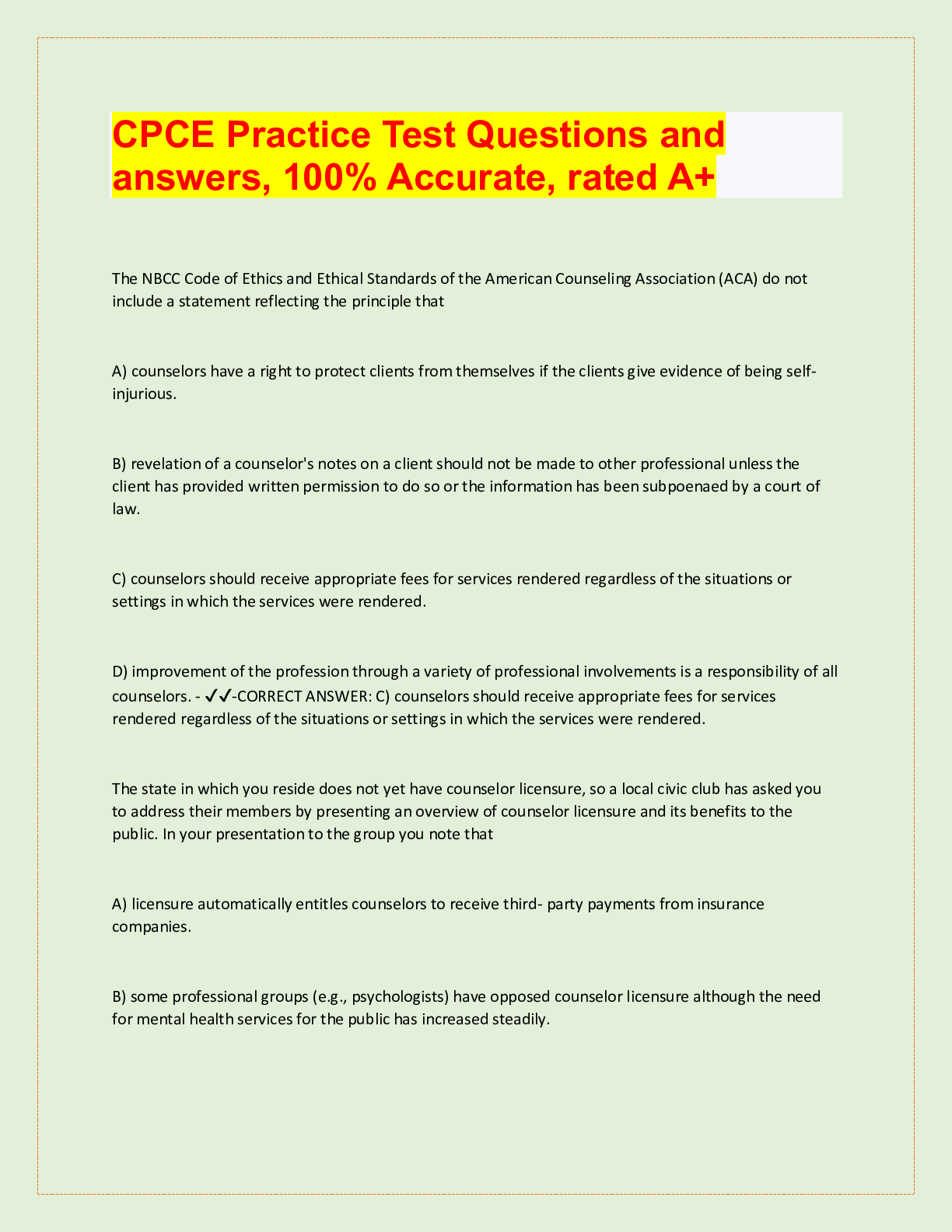


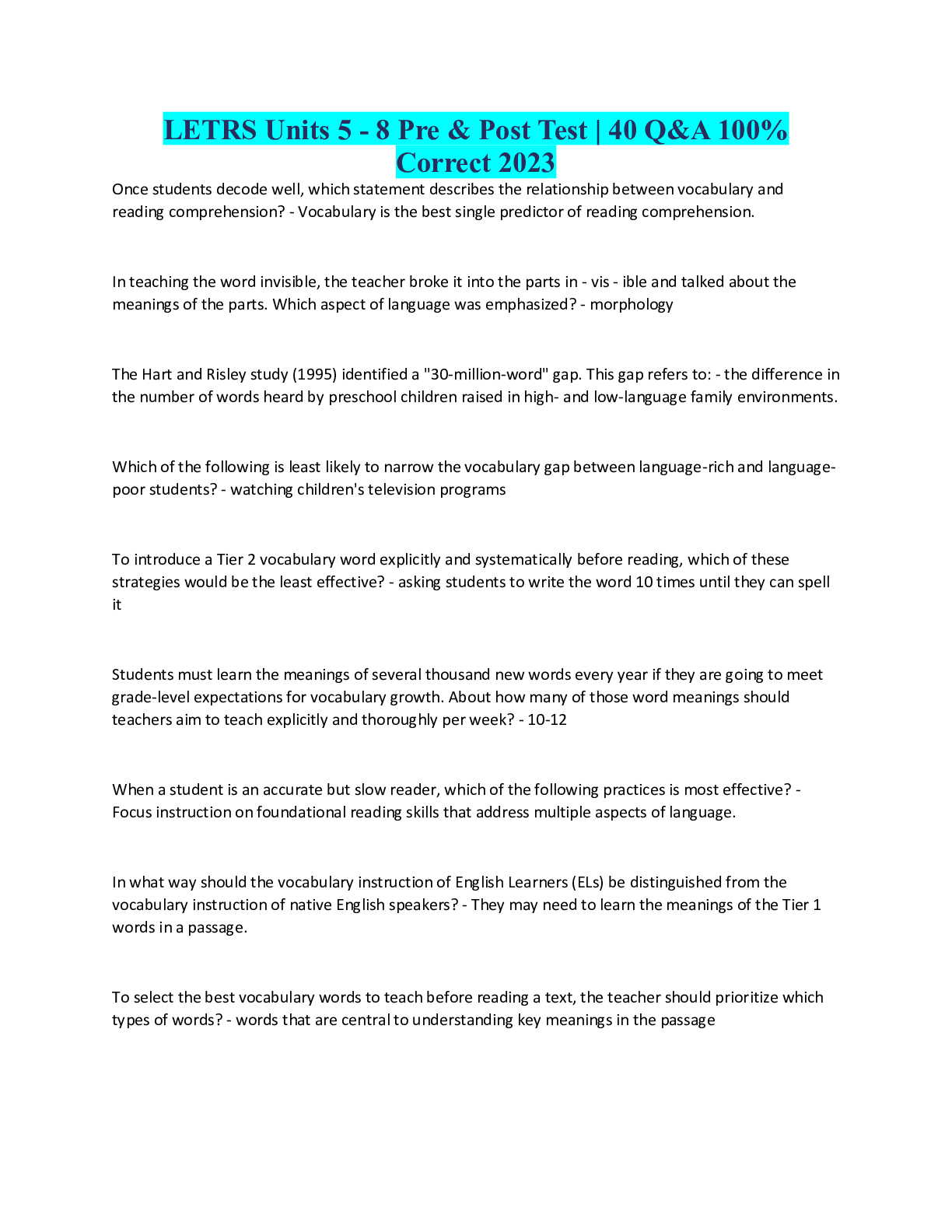
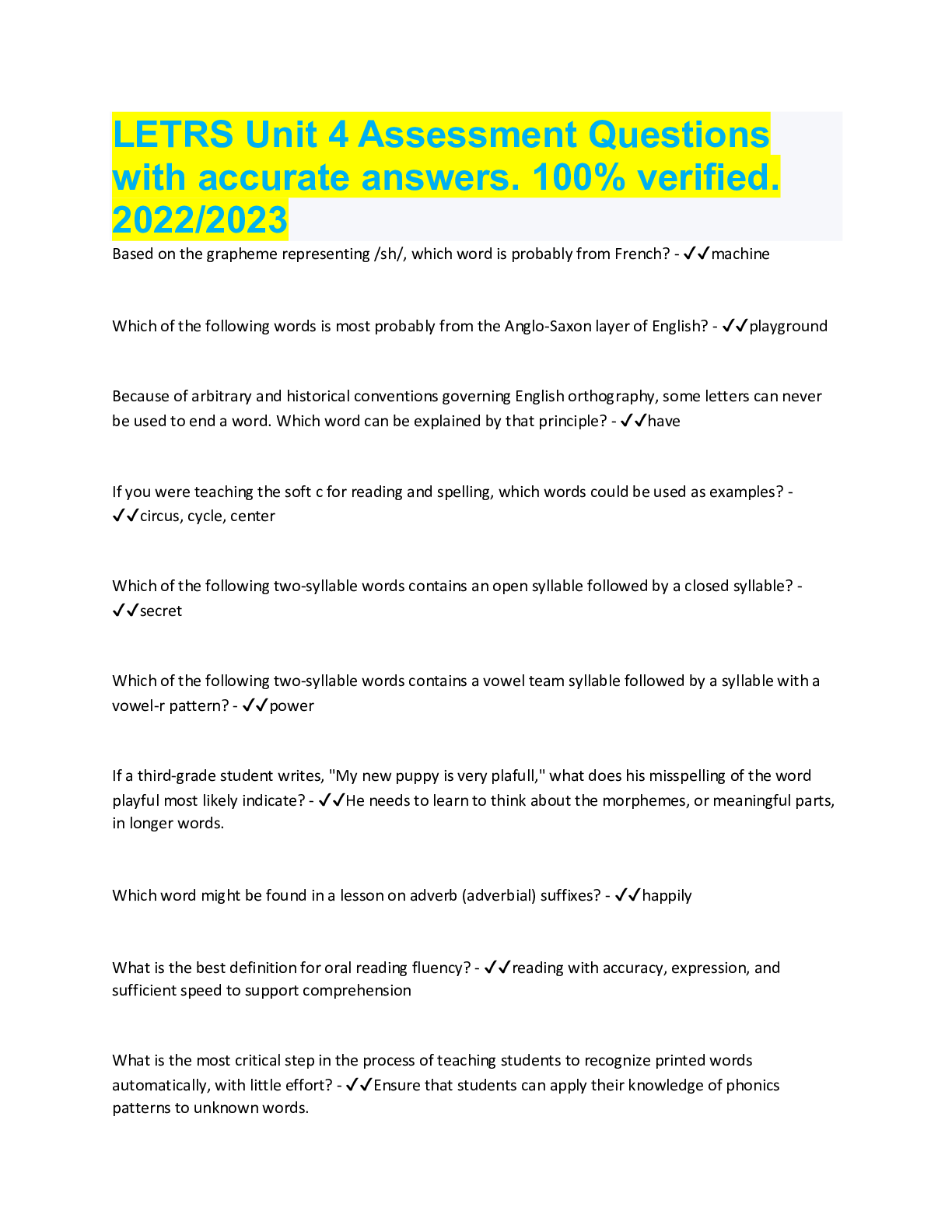




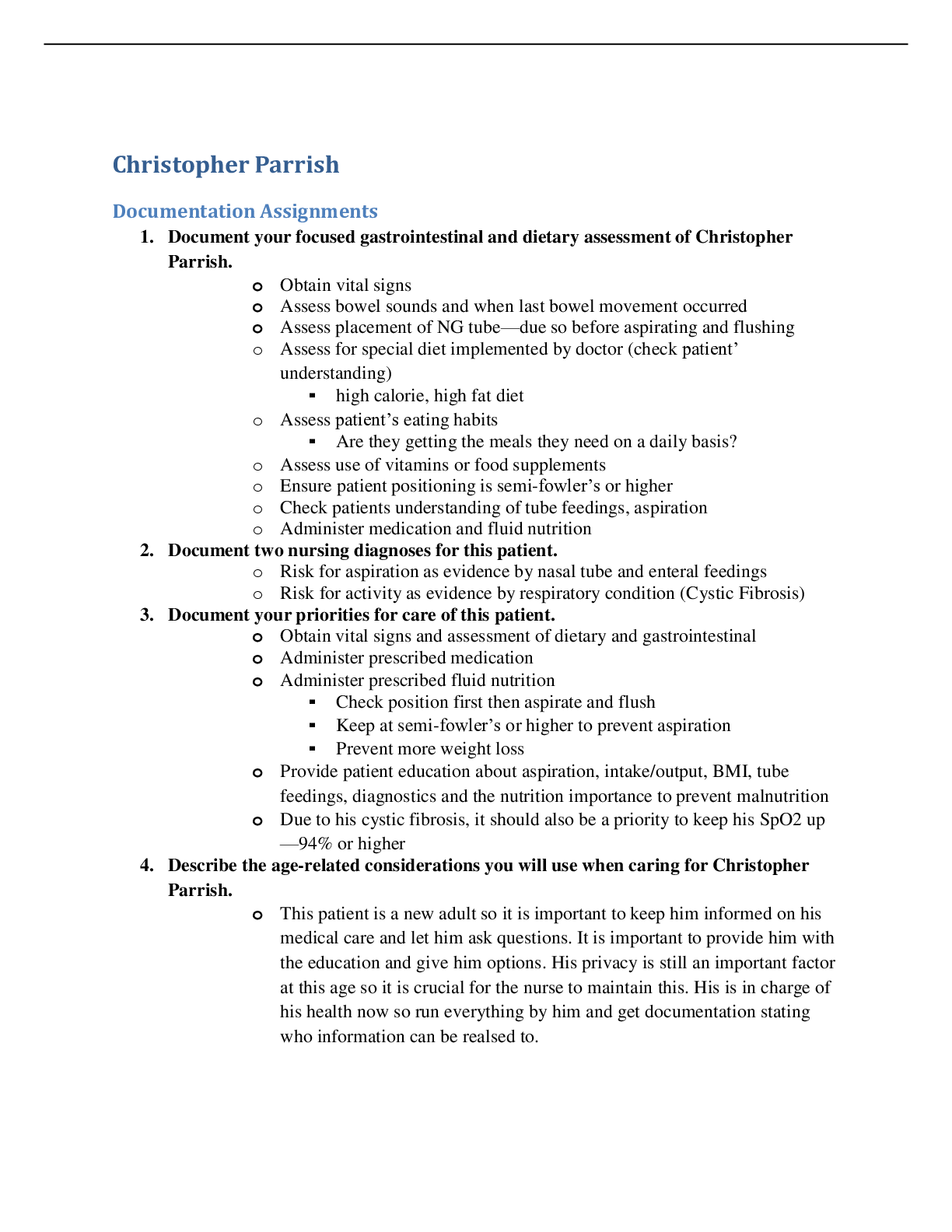
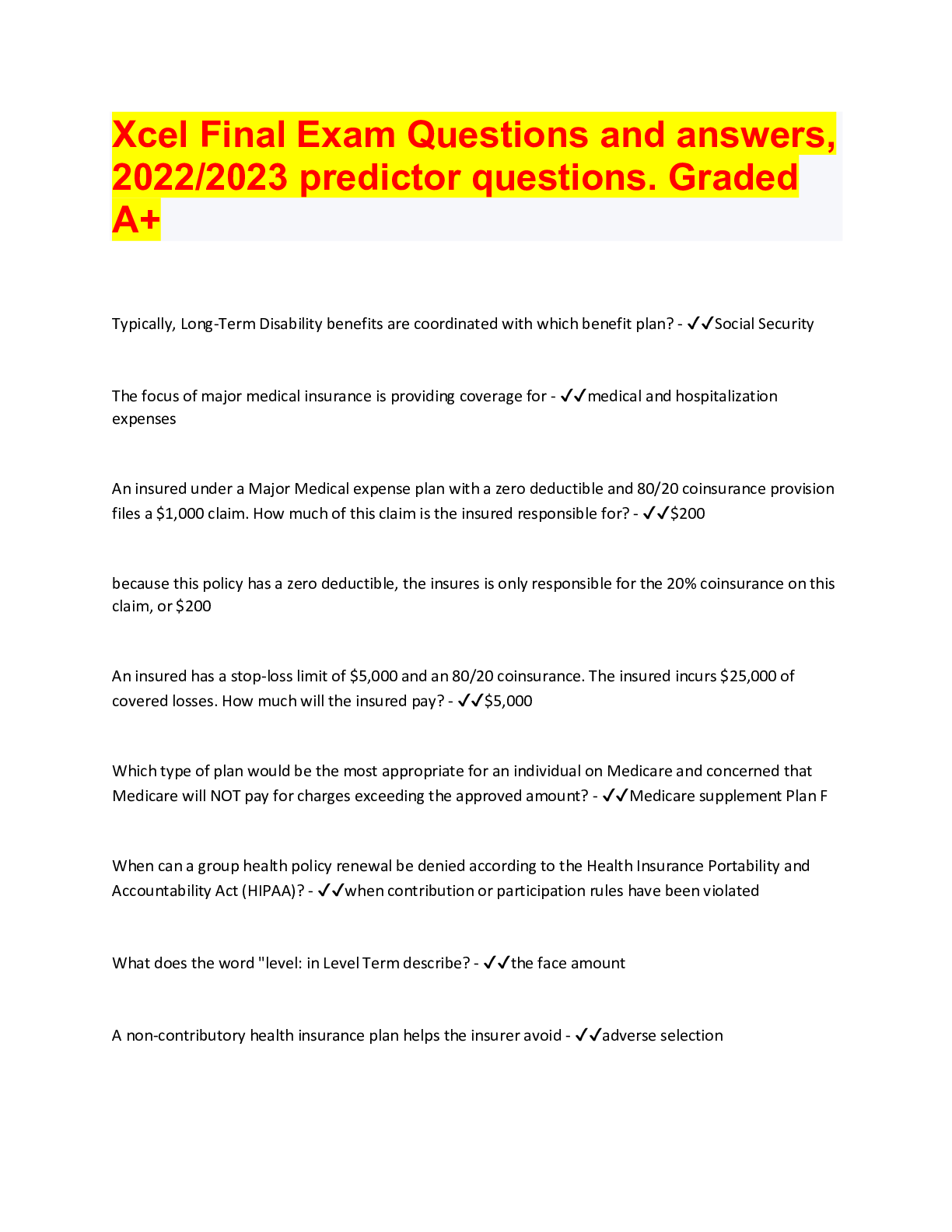
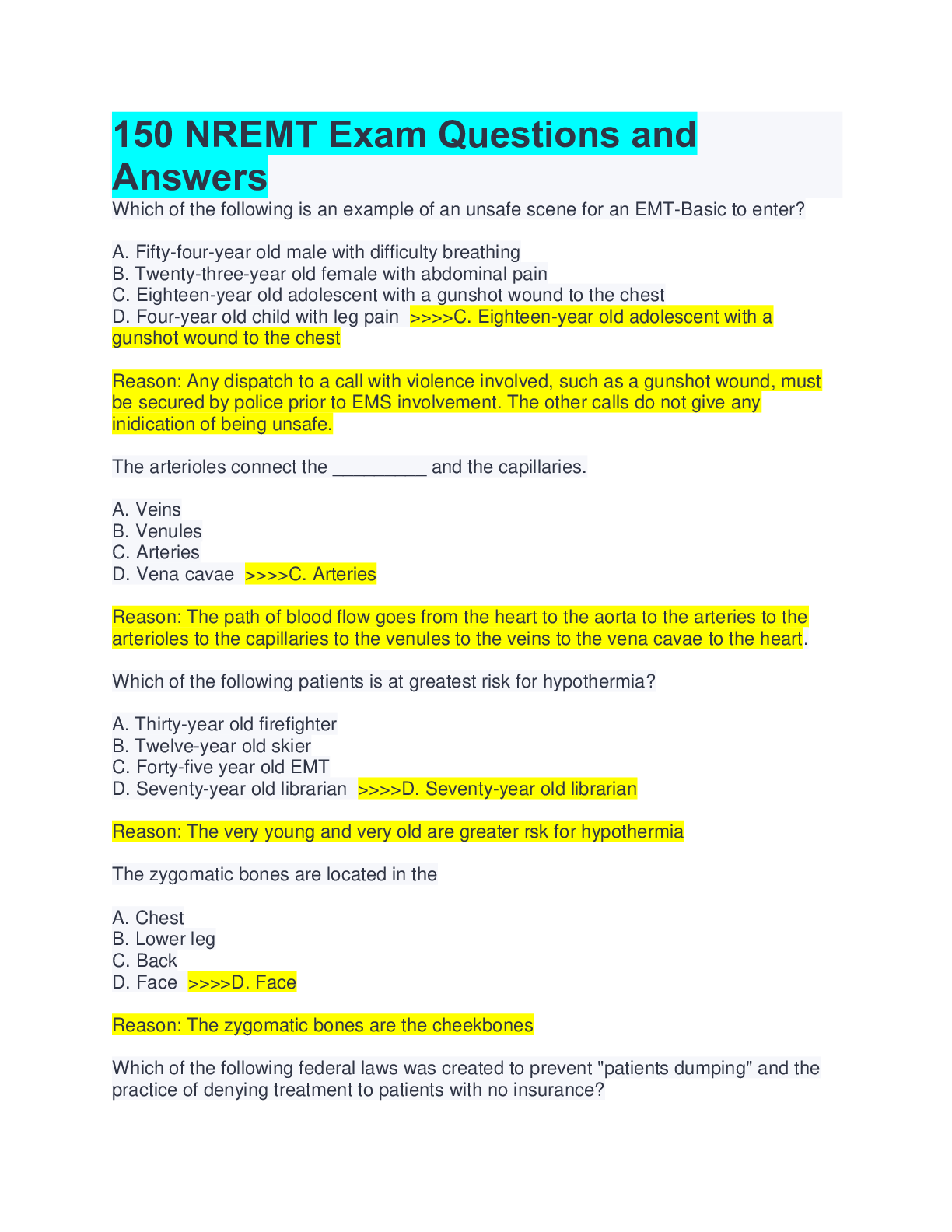


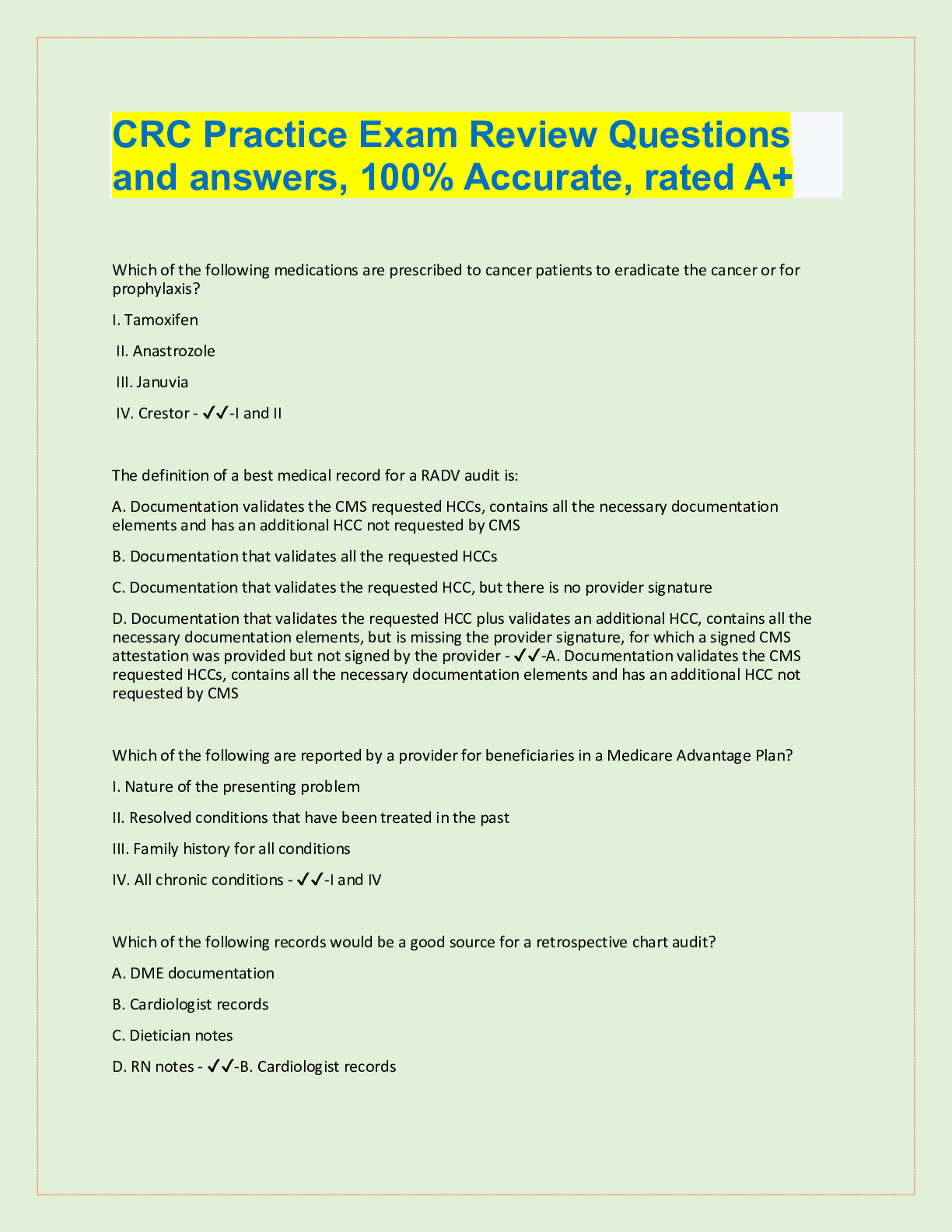
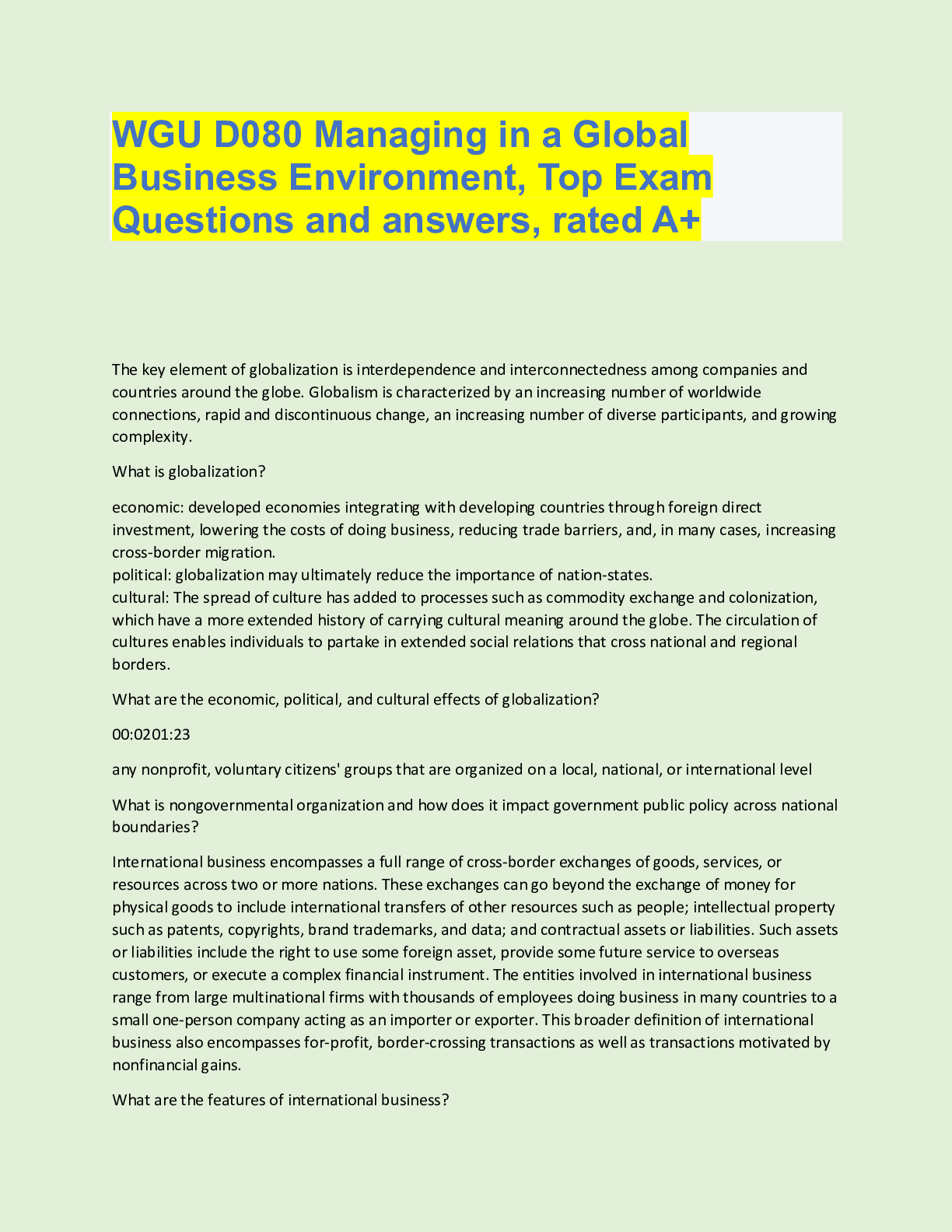
, (A Grade), Questions and Answers, All Correct Study Guide, Download to Score A.png)
, Questions and Answers, All Correct Study Guide, Download to Score A.png)
